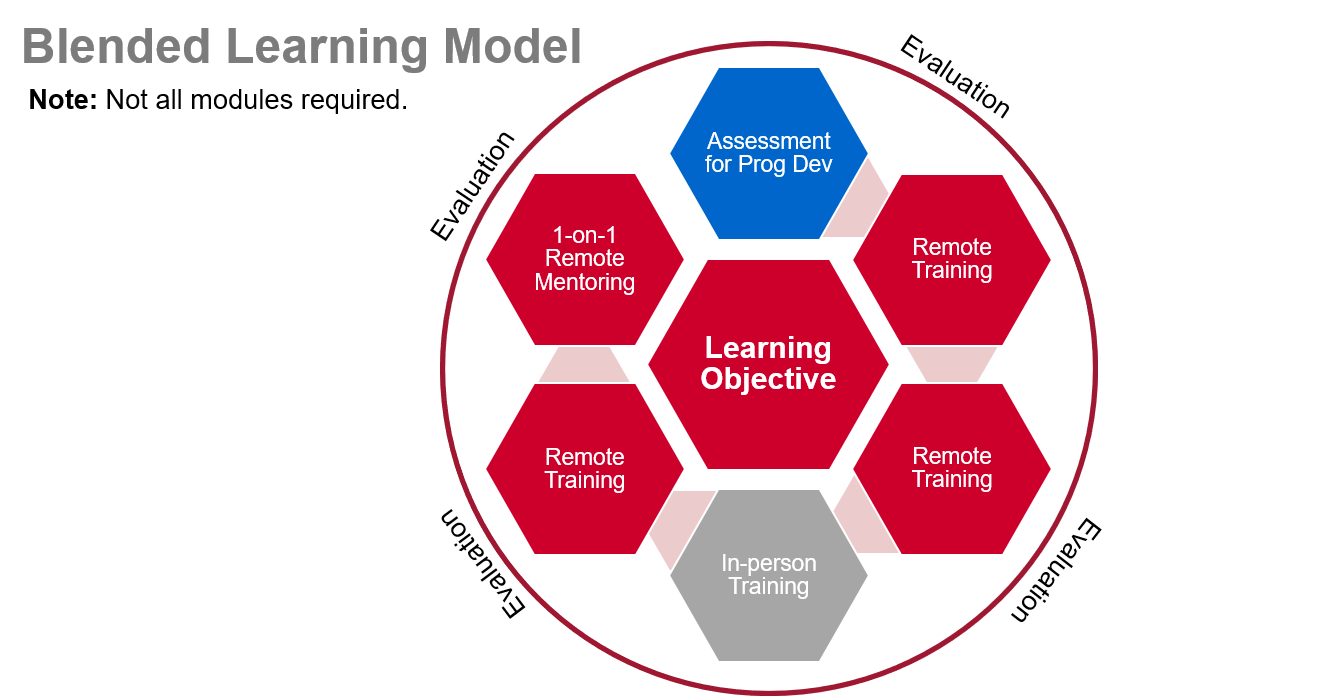Published on March 25, 2021
Children’s HeartLink is evolving our training to a blended learning model that combines face-to-face and remote teaching.
“We are strengthening our training to make our work even more efficient and impactful. Adopting new methods is critical when face-to-face teaching is limited by travel restrictions. The blended model includes both in-person and remote methods that will improve our partners’ learning experiences and outcomes, and allow us to continue our mission without interruption,” says Anne Betzner, Children’s HeartLink Vice President of Programs and Evaluation.
Blended learning:
- Uses multiple training sessions to reinforce learning on an identified topic
- Is designed to produce long-term changes in knowledge, skills and/or practice
- Starts with assessment of partner needs and results in curricula tailored to those needs
- Encompasses a wide variety of teaching strategies, which may be delivered either in-person or remotely, e.g., eLearnings, didactic lectures, simulations, demonstrations
- Is assessed through rigorous evaluation
In collaboration with the Medtronic Foundation, Children’s HeartLink is developing standardized curricula based on our partners’ and volunteers’ interests and needs. These needs include areas of treatment (surgery/catheterization), diagnosis (echocardiography), ICU care, infection prevention, quality improvement, multidisciplinary communication, patient and family-centered care, and strategic planning. Since April 2020 Children’s HeartLink has conducted 66 remote training sessions for 2,878 medical professionals, including multidisciplinary sessions, case discussions and remote coaching to conduct quality improvement projects. In-person visits will be added as travel allows.

CHL’s Blended Learning Model includes these steps:
- Conduct partner site assessment to understand training needs, identify learning objectives and program outcomes
- Create awareness of the selected topic: e.g., eLearnings or other asynchronous sessions
- Build knowledge and understanding: e.g., remote case discussion or demonstration on the same topic
- Build skill through in-person training on the same topic using demonstration and 1:1 mentorship
- Apply learning through remote learner demonstration on the same topic
- Solidify knowledge and skill of topic through remote mentoring
“When an integrated in-person and remote training model is implemented, we envision that our partners will demonstrate growth in knowledge and skills, and that our volunteers will be satisfied with new ways to teach and gratified by helping our partners improve faster. This teaching approach also offers our volunteers and partner hospitals multiple opportunities for interaction with more intentional objectives, which strengthens their relationship and leads to more sustained improvements,” says Betzner. “The blended in-person and remote training model will be essential in creating efficiencies that allow Children’s HeartLink to achieve its goal of reaching one million additional children by 2030.”
